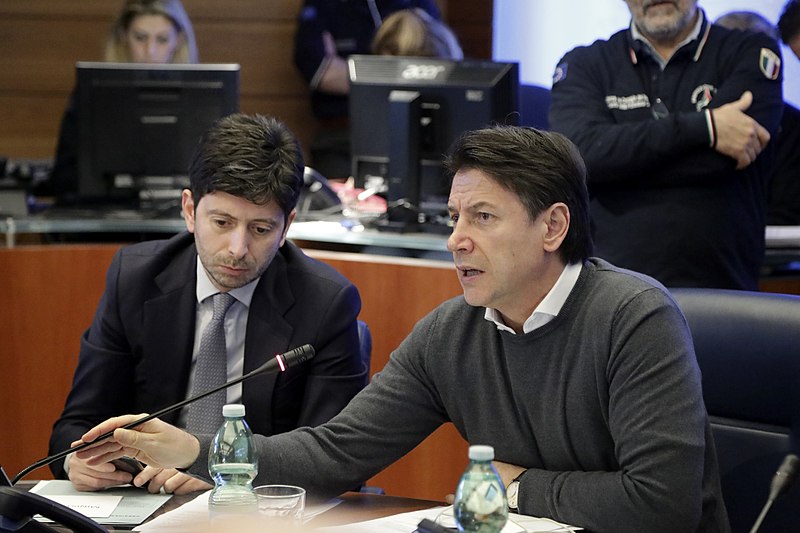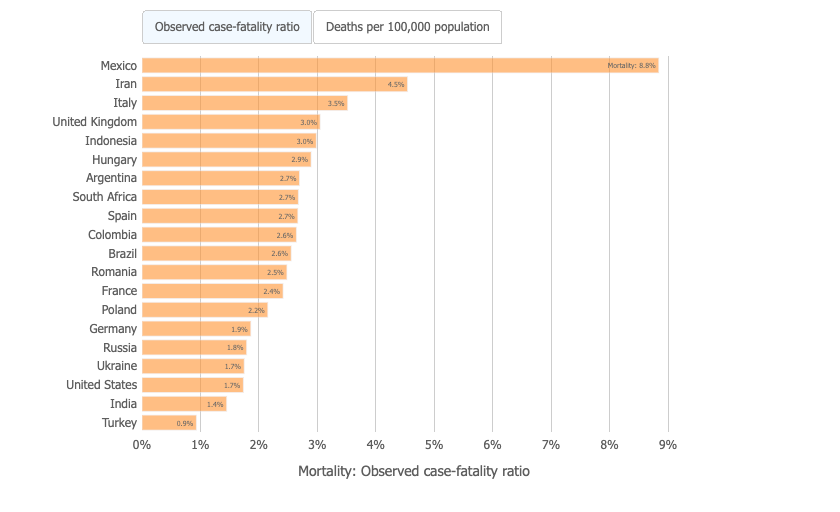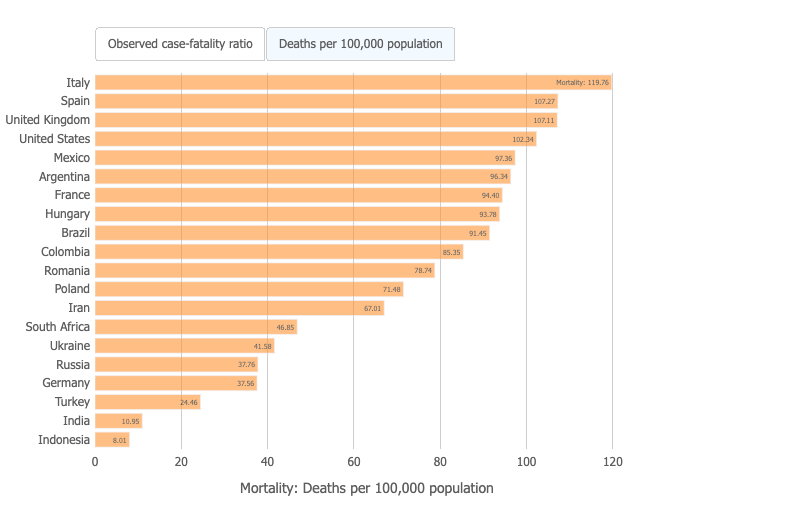Enough lies, Italy is not an anti Covid model (as the WHO said)

"Italy has become the model to which one looks at the measures to be implemented against the pandemic, it is the platform of know-how, also for the rest of Europe and the world", said the WHO in mid-March. Let's see if and how the “Italy model” worked against Covid. The point of Michele Arnese, director of Start, before the vaccine operation …
In contrasting the pandemic "Italy has been a shining example, with national unity and solidarity, common commitment and humility", said in September the WHO director general, Tedros Adhanom Ghebreyesus, in video connection with the forum in Assisi "Cortile di Francis". “Italy – added the WHO director general – has made difficult decisions and has insisted on those, reducing transmission and saving many lives. WHO is proud to have worked with Italy on a daily basis, creating a network of mutual trust ”.
The praises of Hans Kluge, WHO regional director for Europe, and Dorit Nitzan, WHO health emergency coordinator, are even more explicit in mid-March : "Now Italy has become the model to which we look at the measures to be implemented field, is the know-how platform, also for the rest of Europe and the world ”.
Let's look at the Johns Hopkins University data. In two distinct graphs , Italy, among the twenty countries most affected by the Sars-Cov-2 virus, occupies the third and first position respectively.

In the first of the two graphs, posted on the university website, Italy occupies the third place in the ranking concerning the lethality rate (case-fatality, according to the relative standard), which is given by the ratio between the number of deceased and that of the infected. It somehow expresses the probability of a possible death, among those who have suffered the infection. For Italy this risk is estimated in 3.5% of cases.
In the second graph (number of deaths per 100 thousand inhabitants) Italy occupies the first place, with a value of 119.7. Followed by Spain (107.27) and Great Britain (107.11). In Germany, the index stands at 37.56.

Why so many deaths in Italy?
Also for statements by some doctors and prof. It has been whispering for some time: Italy calculates Covid deaths also for those who die with Covid having other serious diseases.
The whispers have been refuted in a recently published analysis which – not only on Italy – also hypothesizes that the dead are underestimated and not overestimated.
To this are added doubts and questions – never resolved – about the management of autopsies.
But there is another explanation for the death records in Italy due to the pandemic that is repeated even at the highest institutional levels: our country has a very elderly population that, unlike other nations, often lives with children and grandchildren.
Many have pampered themselves with this explanation.
But evenings ago – pressed by the journalist Luca Telese – Walter Ricciardi, Italian member of the WHO board and advisor to the Minister of Health, Roberto Speranza (Pd), blurted out on TV : "In Germany, mortality is lower than in Italy for three reasons. The problem is not the demographics, because the demographics are more or less the same. The difference is in the investment that Germany has been making in healthcare for 10 years. In 2015 I wrote a book called "The Perfect Storm", a storm that would have overwhelmed us if we had continued not to do everything we have not done: hiring doctors, renovating facilities and financing health care ".
“The problem is not medical malpractice – added Ricciardi – For example, in Germany there are 28,000 intensive care beds out of 80 million inhabitants. In Italy for 60 million inhabitants there are 5 thousand intensive care beds. If we wanted the same staffing parameters of nurses, we would have to hire 53,000 nurses. It is clear that in Germany people do not die. ICU beds need trained staff. When you don't have this staff, people die ”.
A question arises at this point: but after the first phase of the pandemic – while Ricciardi himself from the top of his posts in the World Health Organization diminished the role of masks and sneered at those in Veneto – primarily the microbiologist Crisanti – he pleaded to increase the swabs to buffer the coronavirus – has the national health service prepared well to face the subsequent phases? Have precise protocols been established on how to treat Covid patients at home and in the hospital? Have specific indications on methods and treatments been sent to general practitioners? And has everything possible been really done and in good time – net of responsibility rebounds between the state and regions – on the organization of hospitals and intensive care?
Given how the so-called second wave of the pandemic was faced, it does not seem that Italy can be indicated as a model of efficiency and effectiveness.
Of course, here we do not want to indulge in almost peripheral matters such as the plans of the emergency commissioner, Domenico Arcuri, on masks and wheeled benches for schools .
But it would be nice to understand who, how and when to update the pandemic plan that was stuck in 2006 . And whether that old man was respected or not. That is, there were or were not stocks of drugs and protective equipment. The story – that is the case of Ranieri Guerra – has yet to be clarified.
Because the question is not idle. Just remember what Siegfried Ranucci did not say – the presenter of Report , the Rai3 program that raised the case of the outdated pandemic plan and on the controversial and criticized role of Guerra, first director of Prevention at the Ministry of Health and then deputy director of the WHO who was therefore monitoring a WHO report on Italy's reaction to the pandemic – but Agostino Miozzo, coordinator of the CTS (Technical Scientific Committee).
Question: "Was there a general pandemic plan as of February 7, the first meeting of the CTS?".
Miozzo's response : “No, and this was the great weakness of the Ministry of Health. There was no provision for necessary masks, beds to free. Above all, there were no stocks. The country was starting from scratch and we, from scratch, had to quickly prepare an anti-Covid plan to be used immediately ".
Question: Why have you been insisting for weeks on swabs only for those with symptoms?
The CTS coordinator replied in September: “There were no reagents, one of those things that a pandemic plan should have foreseen. Limiting tampons was a must. There weren't even masks. Nothing. One Ffp2, one surgical. To cry. In mid-March I invented community masks. I wanted to preserve the professional devices for doctors and nurses and I started saying: let's put on a headband, a scarf, a foulard ”.
But not even the CTS can be a teacher.
“Since the Technical Scientific Committee has de facto centralized the relevant anti-pandemic rules to itself, I expected hospitalization criteria and treatment protocols from the CTS. There have not been and now there is chaos in emergency rooms and hospitals, where each doctor decides independently as there are no uniform hospitalization criteria and treatment protocols ", he said at the end of October (note: at the end October) Matteo Bassetti, director of the infectious disease clinic of the San Martino hospital in Genoa: “There are no shared national criteria for who to hospitalize (Ligurian ones are available). Result? Italian hospitals and emergency rooms are on the brink because the cases of those who really need the hospital are mixed with those who could be followed at home ”, added Bassetti.
Only at the end of November did the circular from the Ministry of Health arrive with the guidelines for treating Covid patients at home.
Ah, but luckily there was local medicine, family doctors, general practitioners close to patients.
Sure. “With few symptoms, take Tachipirina. Tachipirina also in case of fever ”, these – usually, also based on the letters received from Start – the indications for positive Covid.
Then the non-experts discover that – as the general practitioners themselves underline – there is no structural and procedural link with the National Health Service.
A retired doctor outspoken wrote: “What a modern NHS ( National Health Service ) cannot afford that general practitioners are contracted doctors and not dependent doctors, like hospitals. In other words, that, even today, they are linked to a national agreement with Sisac, rather than a national collective agreement with Aran. It is not a question of technicalities, but of substance. Different working hours, different rules, different wages and behaviors. Let's be clear, I'm an old liberal and I respect everyone's skills. But, in times of war and post-war, one cannot stick to the rules of the national agreement in order not to swab, not to vaccinate, to treat sick patients at home by telephone ”.
Is this the Italy model according to the WHO?
This is a machine translation from Italian language of a post published on Start Magazine at the URL https://www.startmag.it/sanita/basta-farse-italia-non-e-un-modello-anti-covid-come-disse-loms/ on Tue, 29 Dec 2020 16:31:09 +0000.
